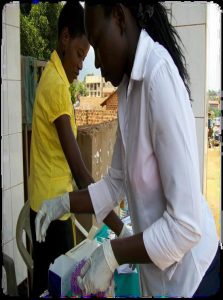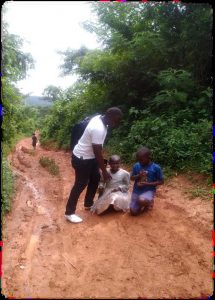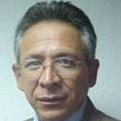Zidan Benevolence International is a local community based organization that works to fight against pediatric HIV and AIDS, and operates in Buikwe district-Uganda Africa to provide HIV prevention, care and treatment services for women, children, and families. Zidan is trying to achieve two goals with one Action that is HIV/AIDS Virus and Hunger by connecting the link between Nutrition and HIV/Aids through Health and Community Development as our focus area.
Find out here an all-round, first-hand report of their much constructive, balanced and passionate field engagement

By Kiyini Jimedine
HIV Rural Community Based Activist
KILL TWO BIRDS WITH ONE STONE
(Achieve Two Goals with One Action)
HIV/AIDS Virus and Hunger (Health and Community Development)
ZIDAN BENEVOLENCE INTERNATIONAL
Mission: Creating self-sustainable and independent communities that rely on tested and aboriginal solutions to local challenges.
Vision: To create empowered communities free from ignorance, HIV/AIDS and extreme poverty
Zidan Benevolence International is a local community based organization that works to fight against pediatric HIV and AIDS, and operates in Buikwe district-Uganda Africa to provide HIV prevention, care and treatment services for women, children, and families. In order to achieve our mission, Zidan Benevolence International collaborates with and empowers communities to play a strong role in planning, delivering, and monitoring HIV prevention, care and treatment services. The organization is committed to identifying, documenting, and replicating sustainable models of community involvement and service delivery that enhance coordination and partnership between the health sector and communities in order to further the highest attainable standards of health and well-being for all. We’re trying to achieve two goals with one Action that is
HIV/AIDS Virus and Hunger by connecting the link between Nutrition and HIV/Aids through Health and Community Development as our focus area. As such, the organization collaborates with a variety of stakeholders, including government agencies, civil society organizations, community leaders, faith-based institutions, networks of people living with and affected by HIV/AIDS, non-governmental organizations, and other entities.
We work within a variety of communities throughout Buikwe district to ensure access to EMTCT, and HIV care and treatment services. We based our evolving approach toward community involvement on the understanding that access to services which prevent mother to-child HIV transmission should be offered in a supportive environment, as women are more likely to utilize health services that their communities and families have deemed important and necessary.

There are belief structures in certain cultures within the settings we work that can undermine HIV treatment and access to care – beliefs such as choosing local traditional healers over health facility services and home-based delivery of infants over delivering at health facilities, which have the capacity to address obstetric emergencies and intervene with antiretroviral medications to reduce risk of HIV infections. We go door to door to save them wherever there to save them.
Traditional healers keep on throwing dust into their eyes where they tell those suffering from AIDS related illness that they were bewitched right from the grave of a person who died of HIV and that’s why they face the same problems he/she faced(the AIDS related illness).They tell them that the person who bewitched went on a grave of a person who died of HIV/AIDS related illness and planted juju (African chemistry from witch doctors) so that you also die since they’re aware that it’s not a curable disease. They keep on asking for a lot of money from them and they pay in installments till they die and the witch doctor benefits yet the person he/she has been treating dies and no one will blame him that he failed because the only excuse he has that they couldn’t pay the money in time. So, since some of these witch doctors do have licenses to carry out their work, we concentrate on door to door mobile voluntary counseling and testing and we give them relevant information about the HIV/AIDS virus. We open their eyes by asking them to give us one person who was treated by witch doctors about the HIV/AIDS related illness within their communities and he/she is feeling good on their juju (African chemistry) but they can’t tell you only to say that those we know all died of witchcraft. Here we use some of the volunteers we use who are positive living that for them they’re on HIV treatment and they’re doing well. We do this kind of work using our local language not like some Organizations who’re found of sending counselors from urban areas and they use English yet these communities the majority never completed even a primary school level of education.

Ngogwe sub-county has one Health center and yet its population is 35,524 people covering up an area of about 158.5 square kilometers. It’s a remote area with poor roads full of feeder roads heading to trading centers, schools and homes. We have no vehicles sometimes we hire but we find when those who transport us charge a lot of money due to poor roads and to the extent that the owner of the vehicle stop in the trading center and the remaining distance we have to walk. It’s a big challenge though we try to challenge it and continue with our work since I grew up in this community where I used to walk 6 kms to attend my primary level of education. So, people face problems of getting access to the health center within Buikwe sub-counties whereby when we mobilize people to go for HIV testing, those who go say that they’re not cared for properly in terms of HIV counseling sessions and services given. They can spend a full day due to lack of health service providers. That’s why in these health facilities, there is no pre-test counseling and the post-test counseling is done briefly where if you prove positive you will be given the ARVs without checking the CD4 count or how strong is your immune system before starting the treatment. When you go they expect you to come back when the tabs are almost done without checking on them. This is the worst action done on health centers. HIV treatment is not like a malaria treatment where not much attention is needed by the health service providers after when you’re given the treatment by the doctors. It needs to at least check on the person who is on treatment.

We introduced what we call Door to Door Mobile HIV/AIDS Voluntary Counseling and Testing (D2DHVCT). Yes the distances are long but not even phone calls even though in my community few can afford to get a simple phone. Relatives of these positive living or family members keep on calling us to visit and help, and the fact is that we move with information relating to Health and community development. We don’t treat but we do voluntary counseling and testing including home base care services. So, we respond to their phone calls and when we reach their homes sometimes we find when the person who was given the HIV treatment (ARVs) is really down and can’t even afford to walk properly and for them they think when they call us we can help and treat the ill person (positive living). It becomes hard for us when we visit them and find such a situation which is beyond our work and we have to forward the person to the health center whereby we have no van/vehicle. We have to organize and look for the motor cycle and to get it we have to first use a bicycle so that we can be in position to find the motor cycle on our way.

We tried to get some contacts of motorcycle riders but they hike the charges due to the poor roads. Now problems come when we were the people who encouraged such people to go for HIV testing, we’re ever blamed and find them sometimes encouraging others not to allow us test them due to what happen to their family members when we forward them to the health centers to confirm (some think that since we’re doing D2DVCT, sometimes they doubt the results) and get treatment. As I said, we face a lot of challenges but we keep on challenging them as you know that a bend in the road doesn’t mean it’s the end of the road unless when you fail to make a turn. We fight tooth and nails to help them and we go at the health center and find out whether those we referred to them were given the treatment and if not we find out why, if yes we follow up and visit them in their respective homes and take their details after getting consent from them. You know every cloud has a silver lining, meaning that there are always positive results out of a tough situation. When we go, they welcome us positively because we do have volunteers within Buikwe communities who do a great job and, where needed, they call us and meet those in need of our help. We found out that the health service providers at the health center do not tell them how to balance their diet when taking the treatment, so, that’s why we came up to fight such by training them the link between Nutrition and HIV/AIDS and since they have land, they should forego processed food because raw food is cheap, better and easy to grow within Buikwe district areas, rural or remote as they’re but with fertile soils. That is why we’re focusing on Health and Community development were we give them developmental ideas so that they don’t die of hunger together with HIV/AIDS.
Education and HIV/AIDS in Buikwe District Communities
Uganda’s education system follows a four tier system. The first tier comprises of seven (7) years of primary education, followed by four (4) years of Ordinary Level secondary education, two (2) years of Advanced Level secondary education and the final tier is three (3) to five (5) years of Tertiary education. Each level is nationally examined and certificates awarded.
The Government introduced Universal Primary Education (UPE) in 1997 to offer free education at the primary level and later in 2007, Universal Secondary Education (USE) was introduced.
University and Tertiary education are offered by both public and private institutions. There also exists informal education in Uganda that aims to serve those persons who did not receive or only partially received formal education. Under the informal system, a range of practical/hands-on skills are imparted. The informal system includes Functional Adult Literacy. As all the education level mentioned above, in my village, no one finished the four (4) years of Ordinary Level secondary education, and a few completed the seven years of primary education. It’s only me who tried and how I managed to complete my Advanced Level secondary education, it’s a long story. My mother said I must always be intolerant of ignorance but understanding of illiteracy. That some people, who were unable to go to school, were more educated and more intelligent than college professors. We ever have that in mind simply because of the journey and life we go through.

Why people fail to go for studies: long distances from home to schools. In my community, there are no nursery schools and a kid of 3 year to 6 years cannot afford to walk 6 kms to and from in the morning and afternoon. Village schools have no vans like town or urban schools. Even though the government introduced the Universal Primary Education to offer free education but still the distance remains the same. So, you will find kids at home when the parents neglected them and they can’t afford transport and even though the schools are free the school management force them to pay lunch fees which isn’t food but porridge only without sugar and they’re supposed to pay $8 pa term. You find that parents can’t afford both transport and lunch fees making them to lose hope from their kids yet it’s their hope in future. The fact is that you can’t build a house without a hammer and saw, and you can’t expect an adult to build a successful life if the tools of learning and health weren’t instilled in childhood. The major problem here is that the parents and children find problems in statements altered/aired out by health service providers when they’re working on them or talking about health issues at the health center especially when some terms are biological and when they’re prescribed the drugs to be used. He/she will leave when he failed to get the information well and health workers since they work on a big number of people, they have no time to concentrate on one person. The government when employing and deploying doesn’t mind about the tribe and location. Uganda has a lot of tribes and they may deploy a health worker not in his/her tribe region. Health centers have no translated charts with relevant information about HIV/AIDS. Most health workers have no counseling skills and have no more details or updates about HIV/AIDS treatment. No connection of any community member at the health facility within the community who would’ve at least is in position to help his community and we find out ourselves coming in, in all areas to help those in need of our help. So, whenever we have health trainings, we encourage parents and the youth to participate and we train/counsel them in our local language and after they deliver the information to their families and neighbors.
Organization Justification
Human Immunodeficiency Virus (HIV); Acquired Immunodeficiency Syndrome (AIDS) remains a major public health problem in Uganda, with about 1.5million people living with HIV/AIDS in 2015 (Uganda Demographic Health UDHS 2016). Significant progress has been registered in addressing HIV/AIDS in Uganda; however a lot is still required especially to address specific regional and local disparities, challenges and needs.
In Uganda today, over 2.2 million people are living with HIV. The AIDS epidemic in Uganda is still severe and the most recent findings indicate that the number of infections by far increase daily in the rural areas of Uganda. Females between the ages of 20-24 show the highest rates of infection with HIV/AIDS. Adolescent females are more vulnerable than their male counterparts in the same age group.
Today, over half of the new cases occur in the between 12-24 years. Uganda is one of the worst hit by the AIDS epidemic in the world with 1.7 million children orphaned at the loss of either one or both their parents. These orphans are stigmatized, denied inheriting property left behind by their parents. They are at risk of malnutrition, illness, sexual abuse and exploitation compared to children orphaned otherwise. This goes hand in hand with causing psychosocial suffering to these children resulting into other social problems as influx of street children, retarded growth, drug abuse and addiction among others.
The HIV/AIDS problem is so complex that to overcome it, one must take into consideration a series of closely inter-related issues. Through working with women, youth and communities, Zidan Benevolence International has learnt that:
– The rapid spread of HIV/AIDS among adolescents and young adults (10-24 years) is simply a symptom of deep underlying chronic causes. These include poverty, unemployment, gender bias, breakdown of family and community structures, insufficient parenting, moral degeneration, rape, defilement, lack of life skills, harmful traditional cultural practices and beliefs, peer and social pressure, lack of role models, lack of adequate information and alternative services to them.
– For most young people, change of behavior is viewed as being hard and unattainable. Our experience demonstrates that a gap exists between knowledge and information on one hand and change of behavior on the other. Helping individuals develop and internalize life skills can bridge this gap. Life skills, in this case, act as a link between mitigating factors, that is knowledge of positive behavior and their benefit and behavior change, which is action. Life skills therefore create the capacity and will to choose from alternatives and implement the desired choices. In both the short and long run life skills translate knowledge of what to do, into how to do it, and provide the enabling factors for doing it.
– Behavior change is a gradual process that requires continuous support from ones immediate and distant environment. The support young people get from their immediate communities, guardians and givers is invaluable in this process.
– Peer and social pressure: inadequate access to services due to numerous reasons (such as a distance, poor quality services and unfriendly attitudes of health service providers to young people, economic submission of young girls, limited responsibilities culturally assigned to men in regard to reproductive health) are among the factors impending behavioral change.
– Using the “fear strategy” to effect behavior change is counterproductive. With the advent of HIV/AIDS, some of the presentation strategies that were designed relied on generating fear in the minds of people so as to bring about change in their sexual behavior. This led to some young people resorting to bestiality, incest and defilement as a safe means of venturing their sexual energy.
While implementing our activities, Zidan Benevolence International has learnt that from positive change to be effected, individuals need to be facilitated to understand how to apply the twin motivating force of “fear and pleasure” to achieve good results. This in our experience helps individuals to examine their perceptions and how perceptions lead to their attitudes and behavior.
– Community sensitization and mobilization, which is the provision of Information, Education and Communication (IEC) to communities to ensure their participation, contribution and involvement in solving a common problem, through change of knowledge, attitudes and practices (KAP) is very crucial for the success of any program/project. We have learnt that equipping young people with life skills should be accompanied with programs seeking to sensitize their parents/guardians, teachers and community members. Sustainability of this Project/Program will only be achieved if the community and the beneficiaries themselves recognize it as a goal and if they contribute adequately to the process, rather than as an aspiration of the implementing agency.
The problem to be addressed therefore is the negative modes of behavior that expose people to risks of the life such as HIV/AIDS infection and its shattering effects on human development. There are two causes to this problem:
– First, the youth lack adequate knowledge of the cause-effect inter-relationship of life situations.
– Secondly, people especially youth lack adequate life skills to translate the knowledge and information of what to do into how to do it and how to access and utilize the enabling factors of doing it.
In many societies/communities, children orphaned to HIV/AIDS suffer problems such as social distress, isolation, shame, fear and rejection that often surround people infected with HIV.
There is therefore need for confidentiality and privacy in regard to their HIV status that should be recognized.
Young people experience orphanhood at the age when parental guidance and support is most needed; they suffer loss of loves, and innocent taking care of their infected parents before they die. Often they are denied education and health services especially because their extended families cannot afford them.
In this regard therefore, Zidan Benevolence International wishes to address these community needs through strengthening HIV/AIDS prevention strategies and interventions and promote economic strengthening among PLWHIV.
This project is relevant to the strategic objectives of Zidan Benevolence International, and therefore it’s an opportunity for the organization to deliver its objectives, while at the same time making contribution to the national and global goal in the context of HIV prevention in Uganda and the world at large.
Organization Survey
Buikwe District has a total area of about 1209 Square Kilometers of which land area is 1209 square km. The total population 146,641.The District has got 30 Health Centers of different level where almost 75% have to walk 5 to 6kms to access the treatment.
The number/ratio of doctors or healthy workers to the patients is alarming where very few doctors work on many patients. This brings in delays at the dispensaries on the appointment days. Some even end up not getting the services as needed in time and HIV/AIDS tend to be common in all the places in question basing on the statistics from their different hospitals. This is because the greatest numbers of patients they get are mainly inquiring about this deadly disease for example in Kasanda Health Center IV where 1422 clients are on ART and not all attend because some could not afford public transport fares.
The common problem all the dispensaries here face little supply of ARVs and are few to accommodate all. This is due to the increasing number of patients due to the change of the system where instantly after testing, doctors encourage those who test positive to start on ARVs straight away without checking whether his/her immune system is strong enough to for him to start the treatment. Due to poor feeding were ever called upon and at the end it’s because of the treatment which leads to weakness. People take ART at the same time starving. So, they need help on the link between nutrition and HIV.

Visiting the village communities with relevant information about HIV virus without any developmental idea or food, it’s like applying horse manure into your garden. These people they know it that to start the HIV treatment you have to be having to eat 24/7 and the side effect of taking the ARVs is experiencing the internal weakness poor desperate people who are starving to death, they’re too weak to go for the HIV treatment because no one to deliver the treatment to them. Healthy centers are far away from them.
Some families in Kiyindi and Bukunja do not even allow you to step into their court yard simply because they know you will be wasting their time since they can go for medication when they have no or enough food. Few do accept but again you find when they don’t know how to read and write and not aware of what the treatment is for. This is what we call illiteracy. This is defined as lack of the ability to read and write with understanding in any language. Persons aged 10 years and above who could not read and write. For those who have never been to school, we consider the age group 15 years and above on the assumption that by age 15 there are minimal chances for one joining school for the first time. This is where our organization will deploy HIV/AIDS counselors within the health centers to help them understand well the prescriptions of the HIV treatment during a Post-Test counseling before they see the doctors. The objective of using this indicator is to shed light on the areas that need improvements in the delivery of the services.
That’s the reason why our organization have come up with the idea to fight against ignorance extreme poverty, hunger, stigma and dangerous diseases affecting and infecting the younger generation and the general Public throughout the operation area and end HIV and AIDS focusing on strengthening health and community systems and improving the quality of services including
Prevention: Voluntary male medical circumcision, prevention of mother-to-child transmission
Diagnosis: HIV testing and counseling
Treatment: Antiretroviral therapy, pediatric HIV care and treatment, tuberculosis and TB/HIV co-infection.
The Organization has introduced organic farming within village communities to fight against hunger and malnutrition to help those who’re starving to death. The health benefits of this farming method is it’s free of artificial colors, preservatives, flavors, trans fats, enhancers, stabilizers, fillers, sweeteners or other additives.
Rural communities have little say in their own future and in directing support to create the innovations to get there. Those with greatest need and the least voice, poor and smallholder farmers, women, youth are precisely those most strategic to involve in order to reach the Sustainable Development Goals. These farmers and social groups are experimenters, producers of knowledge and researchers in their own right; hence they need to be empowered to drive the innovation processes. As key partners in co-research initiatives, development programs and organizations that place their aspirations and capacities at the center, they can become dynamic, pro-active players in the pro-poor governance transformation of agricultural innovation systems. Approaches to improve governance include participatory research and foresight, institutionalizing the rights of rural women and recognizing farmers’ rights to genetic resources.
Personal Hygiene, Water and Sanitation in Buikwe
Poor drinking water access causes waterborne illnesses such as diarrhea, cholera, dysentery, typhoid and polio that kill young children and it’s very difficult to pass by two families when they have no a sick person or kid. They keep on using local medicine or herbs to treat themselves. So, self-medication is the order of the day within my community though we try our level best to out the ignorance from them by visiting their homes and contribute in drenching their wells though we lack funds to drill for them boreholes.
Diarrhea remains a leading cause of death globally among children under five years of age. Diarrhea contributes to nutritional deficiencies, reduced resistance to infections and impaired growth and development. Severe diarrhea leads to fluid loss, and may be life-threatening, particularly in young children and people who are already malnourished or have impaired immunity. As we know that diarrhea mostly results from lack of safe drinking-water, adequate sanitation and hygiene. A number of interventions are effective in preventing diarrheal diseases, thereby positively impacting the nutritional status of those most vulnerable. These are: Access to safe drinking water (e.g. water safety planning – the management of water from the source to tap; household water treatment and safe storage), Access to improved sanitation facilities, Hand washing with soap at critical times (e.g. after toilet use and before the preparation of food) and Hygiene promotion, along with access to safe drinking water and adequate sanitation should be accessible by all. The figure shows the community well contaminated water.

Unimproved sanitation, and poor hygiene practices brings in or attracts parasites that consume nutrients, aggravate malnutrition, retard children’s physical development and result in poor school attendance and performance. Poor sanitation reduces my community’s well-being, social and economic development due to impacts such as anxiety, risk of sexual assault, and lost educational opportunities. To our knowledge, we can improve poor sanitation by introducing the idea of Pit latrine with slab, Ventilated improved pit latrine (abbreviated as VIP latrine) and Composting toilet. Also maintaining wouldn’t be a problem to them but they need to be told how to go about it. They have to know that proper personal hygiene includes frequent hand and arm washing and covering cuts, proper cleaning and sanitizing of all food contact surfaces and utensils, proper cleaning and sanitizing of food equipment, good basic housekeeping and maintenance; and food storage for the proper time and at safe temperatures.
Poor hygiene in my community often accompanies certain mental or emotional disorders, including severe depression and psychotic disorders. Other community members develop poor hygiene habits due to social factors such as poverty or inadequacy of social support.
Achievement
Zidan Benevolence International members have been very instrumental in the provision of Home Based Care services; they trained 136 home family members who could come in to access the HIV treatment of a positive living who could be not in the condition to reach the health center and later they became our community volunteers. Additionally, Support group leaders have benefitted from trainings by ZICO and today this has been able to allow them to pass this knowledge on to others as well as ensure being able to take care of their peers at home.

We are certain from what we have witnessed from our simple interaction with Buikwe village community members and hopeful optimistic faces that we are betting on the right people who need our attention and the right generation for the future of Uganda. We do face challenges especially when we’re giving them our views during voluntary counseling and testing basing on the rumors they hear. But we convince them basing on the facts about HIV/AIDS. Sometime if your point of view is positive, you will see the challenges in the future as opportunities. Though stigma is still within these communities, the best way to curb it, we need to know the root cause first, and those are the modes of transmission. They still have it in mind that when you shake hands with a positive living, you can be infected. That’s where stigma starts from. Our key members are optimist; they’re always enthusiastic and believe in the project. Small setbacks will not deter them, but will actually motivate them to work even harder-things that can only get them better after all. With their never ending enthusiasm, they motivate and encourage other community members and sometimes all what they need is to complete a project successfully believing that you can achieve it. They always believe in the worst case scenario and expect that things that can go wrong will go wrong that is why they’re very risk-averse. However with their tendency to be more careful, they keep the team grounded and keep them from making ill-advised decisions. In addition to that, they hold the middle of the ground position between the optimist and pessimist. They’re neither overly optimistic nor do they expect doom and gloom around every corner. They base their decisions on careful assessments and calculations. They weigh the pros and cons with each other and consider the benefits with the losses. Since they know that they’re going to face different people with different attitudes, young, youth and old, they don’t take time to think and to be creative, they just follow someone to win with no struggle and after they try to take credit for everyone else’s work.
————————————————-
Don’t wait to realize the use of water when the source is dry. If you have a chance to help, help those who are in need of your help. I can be reached on kiyini.jim.jimdean@gmail.com, whatsapp: +256702737256/+971525122704. We need help to save our community.


















